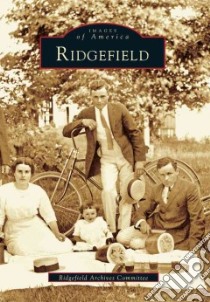Ridgefield - 9780738535388
Un libro in lingua di Not Available (NA) edito da Arcadia Pub, 2004
- € 19.60
- Il prezzo è variabile in funzione del cambio della valuta d’origine
In Ridgefield, Connecticut, a cannonball remains lodged in the side of an old tavern. It dates from the Revolutionary War, when British soldiers fired cannon during the Battle of Ridgefield, fought here on Main Street. The earlier history of the town goes back another seven decades to 1708, when two dozen settlers from Norwalk arrived to purchase the hilly land from the Ramapoo Indians. The founders and their families carved Ridgefield from the wilderness. They laid it out on three forested ridges, running north to south. They dug up stones to clear the soil for farming, and they built walls with those stones to mark off their fields. Members of the Congregational Church designed the wide, main street, putting their meetinghouse near the center and home lots along each side. Over the years, the population of Ridgefield expanded. In the mid-1800s, families immigrated here from Ireland. Toward the end of the 19th century, New Yorkers looking for an escape from city life discovered Ridgefield to be an ideal place for summer cottages. As the town developed a need for more services, stonemasons and other workers arrived from Italy to build roads and sewer lines. Ridgefield has the honor of being the home of two Connecticut governors, as well as of celebrities from the arts, sports, and entertainment fields. With its neighboring town of Wilton, Ridgefield shares the only National Historic Site in Connecticut: Weir Farm. Stone walls still abound in Ridgefield, and the road that once roared with cannon fire ranks as one of the most beautiful streets in the state. Lined with trees and large homes of many architectural styles, Main Street figured in a vote that recognized Ridgefield as Connecticut's number one town.
Informazioni bibliografiche
- Titolo del Libro in lingua: Ridgefield
- Lingua: English
- Autore: Not Available (NA)
- Editore: Arcadia Pub
- Collana: Arcadia Pub (Paperback)
- Data di Pubblicazione: 01 Settembre '04
- Genere: HISTORY
- Pagine: 127
- Dimensioni mm: 234 x 171 x 12
- EAN-13: 9780738535388


